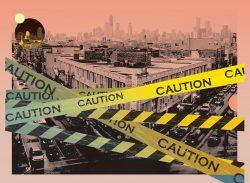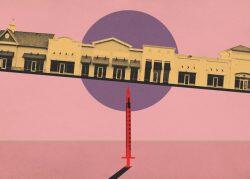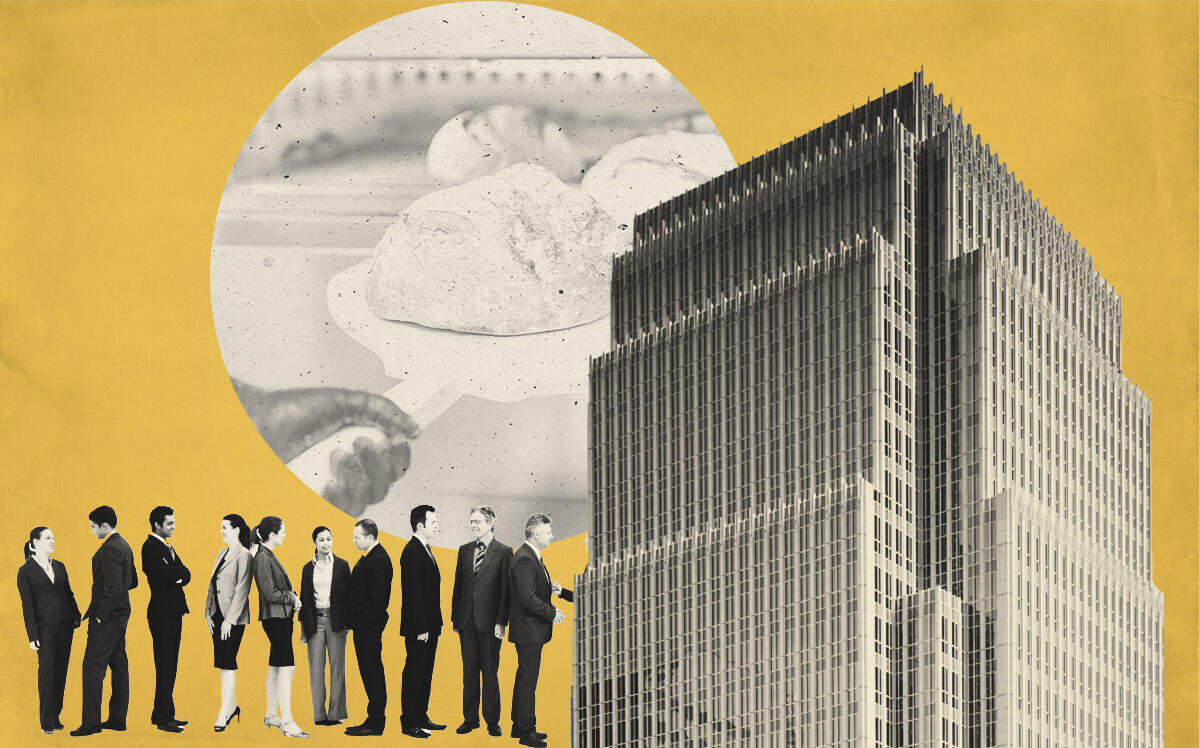For the first time in months, Sean Boyd stood in a line for lunch this week at Chipotle in the Chicago Loop, a departure from ordering burritos with no wait at all during the pandemic.
It was one more sign that the city’s retailers and property values are recovering, said Boyd, an analyst for commercial real estate brokerage Avison Young. After store owners and landlords across the nation were head-faked last spring by the Omicron variant, this year’s optimism seems less fleeting.
One telling indicator: Chicago’s Fulton Street corridor had more pedestrian traffic at the end of last month than some parts of last summer, according to cell phone location data analyzed by Avison Young. That’s abnormal, since traffic tends to be higher in the warmer months and slows down in the winter following the holiday shopping season.
“That’s really promising for us,” Boyd said. “This is a strong indicator for the trailing winter months, which are not necessarily favorable to shopping.”
Foot traffic was also near summer levels last month on stretches of the Magnificent Mile and State Street in the Loop. Foot traffic data throughout downtown, as well as in cities like San Francisco and Houston, backs up that sentiment.
The Loop as a whole is getting busier as more workers return to the office and the pandemic wanes. Pedestrian counts on State Street in the Loop notched the highest monthly average of the pandemic, reaching 72.1 percent of 2019 levels, according to a Chicago Loop Alliance report this week. Foot traffic between Wacker and Ida B. Wells Drives for the week starting Feb. 28 was more than 90 percent of 2019 levels, while the figure was 115.2 percent for the intersection of Michigan Avenue and Wacker.
“This time it feels different,” said David Stone, founder and principal of the Chicago commercial brokerage Stone Real Estate, which represents landlords and tenants. “There have been a lot of false starts over the past two years.”
Granted, retailers and landlords will still have to make some adjustments, and rent prices may come down as companies settle into hybrid schedules. While Chicago workers are starting to return, the level in the Loop stands at just 34 percent of where it was in 2019, the Chicago Loop Alliance found.
“Our store in the heart of the Loop, it should be our busiest store due to the density there, and it’s not,” said Tamar Mizrahi, co-owner of Goddess and the Baker, a chain of six cafes that has five Chicago outlets. “It’s probably our slowest store. Our other stores are not entirely relying on the offices. We’re getting a lot of tourists that are boosting them.”
In some cases, landlords have moved to more flexible rent structures that charge retailers a portion of their sales instead of a fixed rate. That’s what happened to some properties occupied by Goddess and the Baker, helping save the business, Mizrahi said.
As office vacancies stay high, landlords will seek to attract tenants by securing retailers on lower floors as employees increasingly expect to have places like lounges for workers to gather and relax in their buildings.
“Landlords might have to start viewing retail concepts like ours as an amenity more than as a revenue stream,” Mizrahi said.
The pandemic isn’t over, either. Experts have warned another coronavirus wave could hit the U.S. after detecting a subvariant of the Omicron strain spreading quickly through Europe. The chance of another surge has kept expectations at bay.
“We’re so burned out from the up and down, I sort of haven’t really let myself go there as to thinking whether we’re past it or not past it,” Mizrahi said.
Meantime, part-time office work “spells trouble” for retail, said Gary Peterson, a commercial property appraiser with Evanston-based Chicago Commercial Appraisal Group. Less days with workers in offices will erode retailers’ volumes downtown and could hurt commercial property values, especially for smaller office buildings with ground-floor shops.
“They’re going to slip some,” Peterson said. “First-floor retail is really expensive down at the Loop. The rents will have to drop on that first floor space.”
Still, if foot traffic keeps rising, this spring and summer should bring plenty of shoppers. In some parts of Chicago, such as Armitage Avenue in Lincoln Park and Rush Street in the Gold Coast, demand for storefronts hardly faded, according to Stone.
“We’re at the very front end of this recovery,” Stone said. “Over the next 60 days we’re going to see a fairly dramatic increase in downtown pedestrian activity. The recovery isn’t going to be instant. It’s going to take some time for people to learn to trust it, for retailers and investors. They need to trust this time is for real.”
Read more


